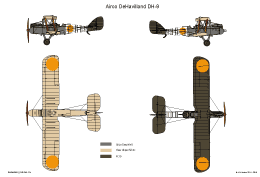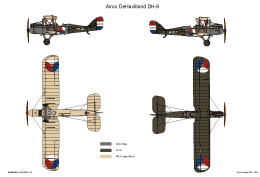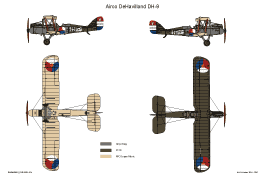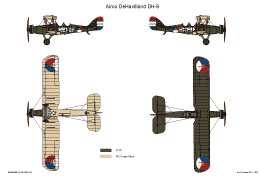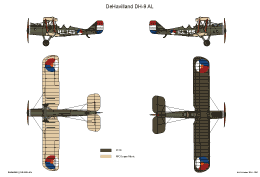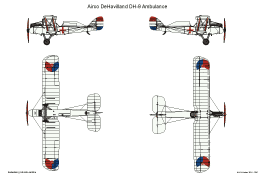Airco DeHavilland DH-9
History
The Airco DH.9 was designed to succeed the Airco DH-4 in an attempt to solve the shortcomings of this aircraft.
In fact, it was just a refinement of the DH.4, with only the hull was revised.
The pilot seat was moved backwards and the fuel tank was now situated directly behind the engine. The engine was to be a promising BHP rated 300 hp, but because of setbacks in the development of this engine, it was only 230 hp. This had a negative impact on the performance of the new machine, which was now significantly less than that of the DH.4. There were over 4000 in order, based on the expected performance. The first examples were delivered in November 1917, nine squadrons were operational in June.
The replacement engine, actually evolved from BHP, was the lighter Siddeley Puma rated 230 hp, with which most production DH.9s were fitted. This engine proved to be unreliable. Also, the (heavier) Fiat A.12 applied.
Other attempts to improve performance with other engines were not successful.
The aircraft was used on the western front and suffered very significant more losses than DH.4, also by the unreliable engine.
For example, in the Middle East there were less troubles, mainly due to the tact that less resistance was encountered.
Production went on until 1919 and in 1920 the type was taken out of service by the RAF.
After the war, many aircraft were declared surplus and were sold or scrapped.
Because of the large capacity the DH.9 was very useful for the transport of carriage of passengers and goods.
Often, the aircraft was substantially rebuilt and equipped with a passenger compartment.
Versions.
- DH.9:
- The original version, 3024 examples built, plus a number under licenses in Belgium and Spain.
- DH.9A:
- better known as the Nine-Ack was designed by Westland to be equipped with the American Liberty L-12 engine rated 400 hp (298 kW). Besides the new engine also slightly larger wings were applied. Because a shortage of these American engine, the plane was put into operation in smaller quantities than hoped. Finally in 2300 examples were built.
Post-war types.
- DH.9B:
- conversion to civilian performance three-seater (one pilot plus two passengers).
- DH.9C:
- Conversion to Civilian four-seat exercise is performed (one pilot plus three passengers).
- DH.9J:
- Modernized version equipped with an Armstrong Siddeley Jaguar III radial engine of 385 hp.
- DH.9J M'pala I:
- South African, modernized version, equipped with a Bristol Jupiter VI radial engine of 450 hp.
- M'pala II: Same, but with a Bristol Jupiter VIII radial engine of 480 hp.
- Mantis: Same, but with a line Wolseley Viper engine of 200 hp.
- Handley Page HP.17:
- An experimental version with air gaps in the wing.
- USD-9 - DH.9s:
- 1415 examples built in the U.S. by U.S. Army's Engineering Division (1415 built)
| Dimensions: | |||
| Wingspan: | 19,92 m | Length: | 9,27 mm |
| Height: | 3,44 m | Wing area: | 40,32 m2 |
| Weights: | |||
| Empty weight: | 1014 kg | Max. start weight: | 1723 kg |
| Performances: | |||
| Max. speed: | 187 km/hr | Rate of climb: | |
| Range: | 4,5 hr | Service ceiling: | 4730 m |
| Miscellaneous: | |||
| Engine type: | Armstrong Siddeley Puma 230 rated230 hp | ||
| Crew: | Two men | ||
| Armament: | 100 kg bombs; one fixed forward firing Vickers machine-gun; One or two movable Lewis machine-gun. | ||
In service with LVA and NEIAF.
In service with LVA
A total of ten aircraft were interned during world war one.
At the end of 1918 Plesman requested to establish a separate unit equipped with the Airco DH-9, within the LVA, which was allowed. All aircraft, except one were returned to the RAF in March 1920. The aircraft were not flown back to England, but scrapped at Schiphol. The remaining DH.9, serialled H-433 was purchased and used for some time at Soesterberg as a trainer for pilots of the KNIL.
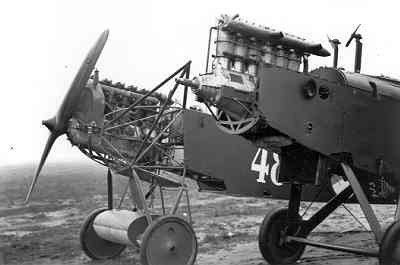
[Enclosed photo from BeeldBank NIMH. Click on photo for ordering information]

[Enclosed photo from BeeldBank NIMH. Click on photo for ordering information]
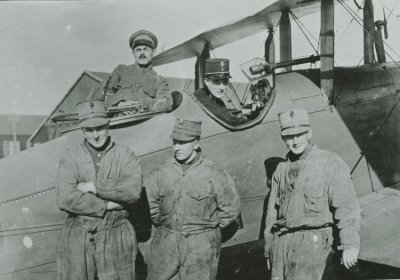
[Enclosed photo from BeeldBank NIMH. Click on photo for ordering information]
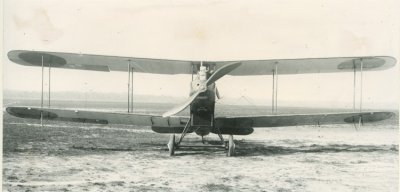
[Enclosed photo from BeeldBank NIMH. Click on photo for ordering information]
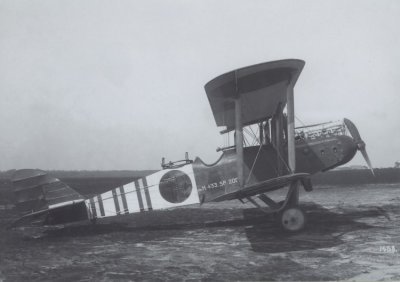
[Enclosed photo from BeeldBank NIMH. Click on photo for ordering information]

[Enclosed photo from BeeldBank NIMH. Click on photo for ordering information]

[Enclosed photo from BeeldBank NIMH. Click on photo for ordering information]
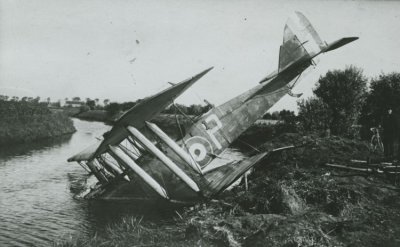
[Enclosed photo from BeeldBank NIMH. Click on photo for ordering information]

[Enclosed photo from BeeldBank NIMH. Click on photo for ordering information]
In service with NEIAF
In May 1919 an order was placed for DH.9 's for the ML-KNIL. There were ten newly built by DeHavilland. The rest were assembled in the Netherlands.
The first twelve aircraft were delivered in 1919, followed by 14 units in 1921 and 10 in 1922.
The devices were all in the standard RFC-painting, with the Dutch registration and markings on the fuselage and wings.
During the period of use some DH-9s were converted for special purposes, such as four ambulance units, e.g. designated H-115A, photo reconnaissance, such as H-120F, H124F and H130F).
There were also a number of DH-9s built. These were fitted with a plywood fuselage and were provided with HL-registrations.
These home-built DH-9s were as equipped with a flat radiator at the front, a fully covered engine, new balanced ailerons and an enlarged tail fin and rudders. The prototype,serialled Hl-137, first flew in 1925.
In 1934, the remaining DH-9s were fitted with new engines, a 465 hp Wright Whirlwind by, these were reserialled HW serials and were used as trainers until 1937.

[Enclosed photo from BeeldBank NIMH. Click on photo for ordering information]

[Enclosed photo from BeeldBank NIMH. Click on photo for ordering information]
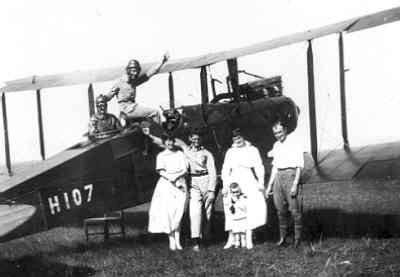
[Enclosed photo from BeeldBank NIMH. Click on photo for ordering information]
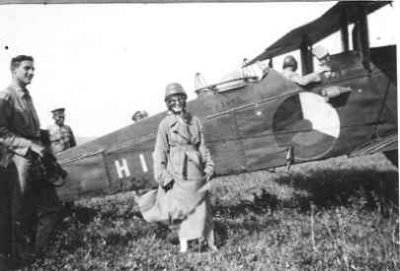
[Enclosed photo from BeeldBank NIMH. Click on photo for ordering information]
Serial overview LVA and NEIAF
Serial overview LVA
For the serials LVA I have used the results of a research by Van Zwiete; this information I obtained from F. Gerdessen.
| Serial
Serial
| RFC-serial
RFC-serial
| Date in service
Date in service
| Date out of service
Date out of service
| Notes
Notes
|
|---|---|---|---|---|
| H433 | B7620/A | 27-06-1918 | ? | Interned near Breskens |
| H434 | C1211 | 29-06-1918 | 03-1920 | Interned near Breskens |
| D2781 | 25-07-1918 | |||
| H437 | D5717 | 31-07-1918 | 03-1920 | Interned near Biggekerke |
| B7624 | 08-08-1918 | Set to fire by crew. | ||
| D3142 | 16-08-1918 | Written off | ||
| H438 | B7623 | 16-08-1918 | 03-1920 | Interned near Breskens. A report from an accident, dated February 6, 1919 states this is a D.H.-9, although engine number and RFC serial are missing in this report. |
| D1708 | 16-08-1918 | Written off. | ||
| H439 | D7204 | 29-08-1918 | 03-1920 | Interned near Zuidzande |
| H441 | C1294 | 05-09-1918 | 03-1920 | Interned near Oostkapelle |
| D3107 | 15-09-1918 | Crashed in a canal; not repaired. | ||
| H442 | D7336 | 15-09-1918 | 03-1920 | Interned near Kerkwerve |
| H443 | D1733 | 15-09-1918 | 03-1920 | Interned near Cadzand |
| C2185 | 16-09-1918 | Crashed in sea. | ||
| H444 | D3251 | 24-09-1918 | 03-1920 | Interned near Breskens. |
| H446 | D3271 | 26-09-1918 | 03-1920 | Interned near Vlissingen. |
Serial overview NEIAF
| Serial
Serial
| Construction nr.
Construction nr.
| Date in service
Date in service
| Date out of service
Date out of service
| Notes
Notes
|
|---|---|---|---|---|
| NEIAF built with wooden fuselage. | ||||
| HL-140 | ML built | |||
| HL-141 | ML built | |||
| HL-142 | ML built | |||
| HL-143 | ML built | |||
| HL-144 | ML built | |||
| HL-145 | ML built | |||
| HL-146 | ML built | |||
| HL-147 | ML built | |||
| HL-148 | ML built | |||
| HL-149 | ML built | |||
| Obtained from RFC/RAF surplus | ||||
| H-101 | ||||
| H-102 | ||||
| H-103 | ||||
| H-104 | ||||
| H-105 | ||||
| H-106 | ||||
| H-107 | ||||
| H-108 | ||||
| H-109 | ||||
| H-110 | ||||
| H-111 | ||||
| H-112 | ||||
| H-113 | ||||
| H-114 | ||||
| H-115 | ||||
| H-116 | ||||
| H-117 | ||||
| H-118 | ||||
| H-119 | ||||
| H-120 | ||||
| H-121 | ||||
| H-122 | ||||
| H-123 | ||||
| H-124 | ||||
| H-125 | ||||
| H-126 | ||||
Scale 1/72
Kits
- Classic Plane
- Kit 13: a resin kit, with Airfix DH-4
- Kit XX: a partly resin kit of a DH-9 Ambulance version of the ML-KNIL, with Airfix DH-4
- Kit yy: a vacu formed kit
- Kit 12: a vacu formed kit of DeHavilland (Airco) DH9A
- Maquette
- Kit 7206: an injection moulded kit of DeHavilland DH9a
- Kit 7211: a model of a Polikarpov R1 (DH9)
- MBC Models
- Kit XX: Airfix DH-4 with resin fuselage and decals for machine of ML-KNIL.
- Ardpol
- Kit 72-008: DeHavilland DH9
- Roden
- Kit 036: DeHavilland DH9
Modeling Add-on
- --
- Set --: --
Decals
- --
- Set 72071: Set orange 'meat bals' and serials for: Fokker D.VII F3475 and D-32 RNlNAS; Fokker D.VII 258/265 LVA; Bristol F.2B BR401; R.A.F. SE.5A SE214; Nieuport 21 N215; Nieuport 23 N220; Airco DeHavilland DH9 H-104 ML-KNIL (no roundels); Sopwith Pup LA41
Scale 1/48
Kits
- Roden
- Kit 436: A DH-9 Ambulance
- Kit 423: A DH-9 Puma (also used by NEIAF)
Modeling Add-on
- --
- Set --: --
Decals
- --
- Set --: --
The fuselage is overall PC10 [this colour varied from dark green to brown [Humbrol H179 till Humbrol H108]; the wings were clear doped linen. The LVA used orange balls as identification marking untill early twenties (of twentieth century).
The ML-KNIL used the roundels similar to those currently in use.
| Scheme | Colorname | FS number | BS-number | Humbrol | XtraColor | Vallejo Model Color | Vallejo Model Air | WEM | |
|---|---|---|---|---|---|---|---|---|---|
| Standard #1 | Fuselage | PC10 | ~4086 | X144 | |||||
| Wings | clear doped linen | 121 | X105 | ||||||
Check www.paint4models.com for an extensive conversion table with lots of colour and paint systems.
Literature.
| Nederlandse Militaire Luchtvaart in Beeld. deel 1. | Hugo Hooftman | pag. 28 | 1977 | Europese Bibliotheek; Zaltbommel |
| Militaire Luchtvaart in Nederlandsch-Indië in beeld, Deel 1 | Hugo Hooftman | pag. 34 - 38; 13 - 29 | 1978 | Europese Bibliotheek; Zaltbommel |
| KLu Vliegtuigen | W. Schoenmaker & Th. Postma | pag. 21 | 1987 | Uitgave: De Alk Alkmaar |
| Van Luchtvaartafdeling tot Koninklijke Luchtmacht: 75 jaar Militaire Luchtvaart in Nederland | K. v.d. Berg | pag. 12 | 1987 | Rebo Produkties; Sassenheim |
| Vintage Warbird no 1; The Royal Flying Corps in worldwar One | Raymond Laurence Rimell | pag. 14 - 16 | 1987 | Arms and Armour Press; Poole, Dorset |
| Aircraft Archive: Aircraft of World War One; Volume 3. | pag. 14 - 17 | 1989 | Argus Books, Hempsted | |
| Camouflage en Kentekens | J.Greuter e.a. | 1997 | Bonneville – Bergen (NH) | |
| Air Enthusiast no.80, The Historical Aviation Journal: Unexpected Windfalls | Bart van der Klaauw | pag. 54 -59 | 1999 | Key Publishing, Stamford |
| Aviation News #2; December 15, 1983 | Colin Owers | pag. 616 - 630 | 1983 |
Websites.
Special thanks to F. Gerdessen for providing me with additional information regarding the serials of the LVA machines

